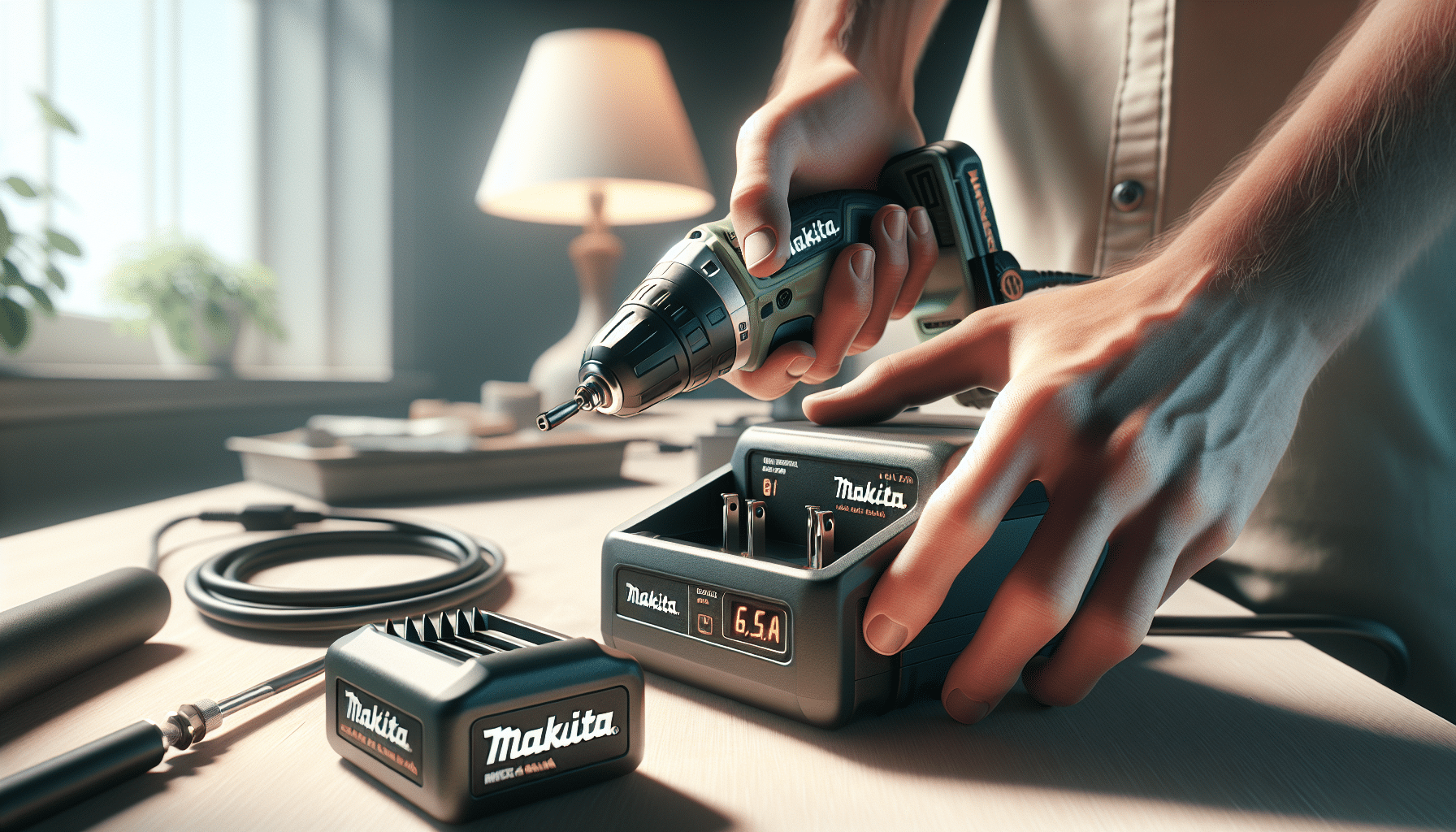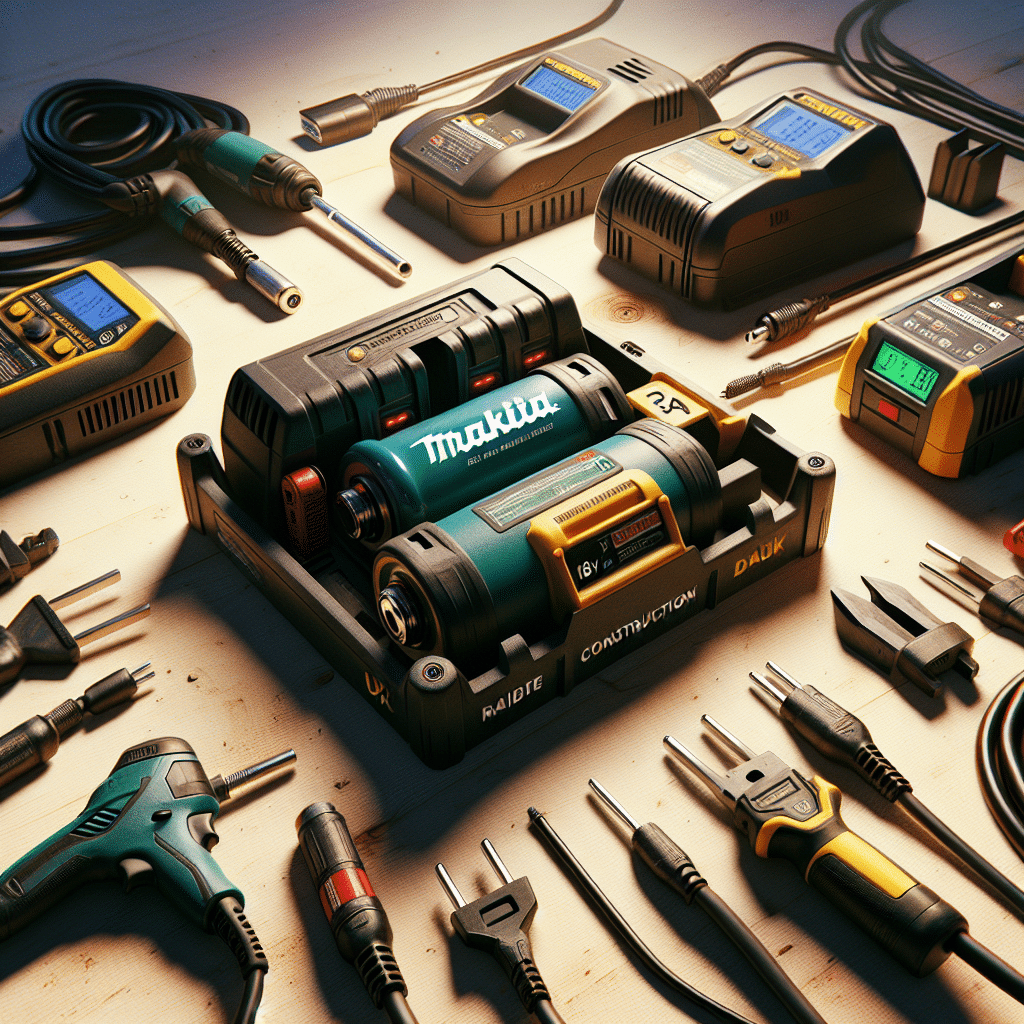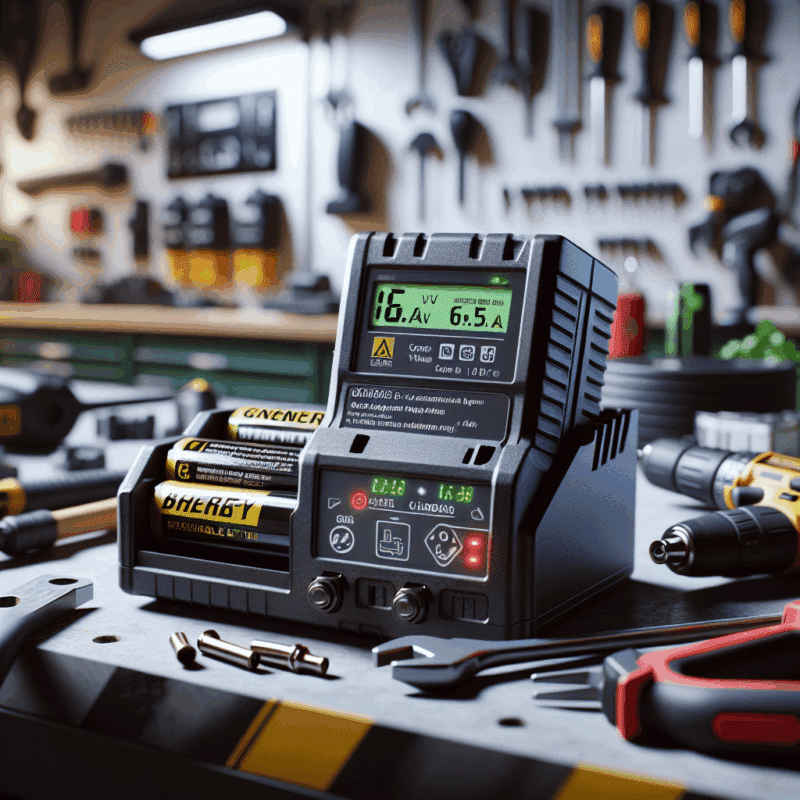How to Upgrade from Makita 3.0A to 6.5A Rapid Charging Safely
In This Article
- The makita 6.5a charger significantly reduces charge times across all standard Makita LXT batteries.
- Smart sensors and active cooling protect battery health despite faster operation.
- Compatible with all Makita 18V LXT batteries, ensuring worry-free integration.
- Upgraded diagnostic indicators simplify troubleshooting and planning.
- Consider OEM chargers to maintain safety and warranty protection.
- Rapid charging directly translates to more uptime and better job site efficiency.
Why Consider Upgrading to a 6.5A Charger?
Key Benefits of More Amperage
The makita 6.5a charger offers a distinct advantage for both professionals and serious DIYers. With a substantially higher charging current compared to standard 3.0A or even 5.0A units, it slashes the time needed to power up 18V LXT batteries. By delivering more amperage, the charger accelerates the charging cycle significantly, ensuring your tools are ready when you need them. For high-demand environments such as construction sites or manufacturing floors, this can amount to multiple hours saved each week. Faster charging not only means less downtime but also enables multi-shift teams to operate more efficiently.
Another benefit of the makita 6.5a charger lies in its advanced thermal management. Rapid chargers of earlier generations would frequently suffer from excess heat—which shortens battery life. This upgraded model, however, features smart temperature sensors and active cooling systems designed to preserve battery health even under continuous use. As a result, users benefit from longevity and reliability without sacrificing speed.

Understand the Differences Between Charger Models
From 3.0A to 6.5A — What’s Actually Changing?
Comparing older models like the Makita DC18RC (3.0A) or DC18SD (standard slow charger) with the makita 6.5a charger showcases monumental performance differences. The amperage increase from 3.0A to 6.5A almost halves charging times for most common LXT battery types. For example, a 5.0Ah battery that takes approximately 45 minutes on a 3.0A charger can be ready in under 25 minutes with the 6.5A variant.
Beyond speed, other improvements abound. The latest charger introduces intelligent charging protocols that dynamically assess battery condition, adjusting flow and temperature throughout the charge cycle. This helps to prevent overcharging and reduces stress on the battery’s cells. Legacy models simply cannot compete on this level of refinement.
Moreover, the physical designs have evolved. The new charger includes modern ergonomics and built-in diagnostics. LED indicators offer real-time insights into charge level, battery condition, and error status—features often missing or simplified in older versions. If productivity, battery protection, and charge speed are concerns, the jump to a 6.5A charger is more than justified.
Battery Compatibility Checklist for Makita LXT
How to Ensure Proper Fit and Safety
Before transitioning to a makita 6.5a charger, verifying compatibility is critical. Fortunately, this powerful charger supports the entire range of Makita 18V LXT lithium-ion batteries. Whether you use 2.0Ah compact batteries or the heavier-duty 6.0Ah variants, the 6.5A charger is designed to accommodate them all safely and efficiently.
That said, it’s vital to inspect your batteries for signs of damage, as even compatible batteries can present hazards if physically compromised. Ensure that battery terminals are clean, undamaged, and free of corrosion. Do not attempt to charge batteries with warped casings or exposed wiring.
Additionally, always confirm the charger you purchase is a UK or EU model if applicable. Regional versions of the makita 6.5a charger sometimes differ in voltage and plug style. Matching these aspects ensures safe operation right out of the box. For further safety tips and product guides, visit Learn more about Makita-compatible battery charger upgrades and maintenance.
Step-by-Step Guide to Switching Chargers
Safe Replacement and Installation Tips
Transitioning to a newer charger like the makita 6.5a charger is straightforward if you’re prepared. First, unplug your current charger and inspect the power outlet for damage. Place the new charger on a stable, ventilation-friendly surface away from direct sunlight or extreme cold. Ambient conditions can affect charging efficiency and battery health.
Next, plug in the new charger and allow its diagnostic system to calibrate. Upon insertion of a Makita LXT battery, the LED indicators will light up according to the current battery status. These may blink or remain solid depending on charge level or detected fault codes. Consult the included user manual to understand the indicator meanings.
Avoid stacking chargers or charging batteries in enclosed spaces. Good airflow ensures optimal cooling. Never attempt to modify the charger or associate it with unauthorised power sources. To further optimise your Makita tool ecosystem, check out our accessory integration guide at Read a related article.
How Rapid Charging Impacts Battery Lifespan
Does Faster Charging Mean More Wear?
This is a commonly encountered concern among users: will the quicker charge of the makita 6.5a charger reduce the overall lifespan of the battery? Fortunately, Makita has mitigated this issue through intelligent battery and charger communication protocols. Thermal and voltage sensors work dynamically to modulate charging speed based on battery temperature and age.
In essence, while rapid charging does draw more energy at once, the system’s calibration ensures it doesn’t ‘overcook’ the battery. Additionally, the charger slows down once saturation thresholds are approached, mimicking a ‘trickle charge’ for the final 10% of capacity. This prevents over-voltage risk while extending long-term usability.
According to independent lab tests published by Step-by-step Makita switch replacement instructions, batteries charged with the 6.5A model showed equal or better lifespan than those using slower models, especially when cycling daily across months of use. Proper care can extend battery life well past 1,000 full cycles, even under rapid charging schedules.
Choosing Between OEM vs Third-Party Chargers
Reliability and Warranty Considerations
One of the more nuanced debates in the power tool ecosystem surrounds the use of original Makita chargers versus third-party alternatives. While third-party chargers often promise similar amperage levels, very few can match the quality control, software precision, or safety protocols found in the genuine makita 6.5a charger.
Opting for OEM not only guarantees better heat regulation and longer battery life but also preserves your warranty. Most Makita battery warranties become void if non-OEM chargers are used. This is an often overlooked but important consideration when building a professional kit that will serve you for years.
If you’re still considering alternatives, ensure the third-party charger is fully certified for EU or UK market standards. Look for CE markings and review consumer safety reports through trusted platforms like Boost efficiency with strategic digital upgrades before making your decision.
Reduce Downtime on Worksites with Faster Charging
Productivity Gains and Efficiency
For professionals working under tight deadlines, every minute matters. The makita 6.5a charger is an invaluable tool for dramatically shrinking the interval between battery swaps. This minimised downtime translates into a noticeable uptick in daily productivity.
On job sites utilising multiple cordless tools, such as drills, SDS hammers, or saws, having batteries ready every 20–30 minutes adds measurable value. In team settings, fewer batteries are needed since charging cycles start and finish more quickly. This economises shared toolkits and reduces clutter.
Moreover, it allows for leaner inventory planning. Contractors can carry fewer battery packs without compromising tool availability. This leads to weight savings, less financial outlay, and simpler tool management logistics—key advantages in both mobile and fixed-site operations.
User Experiences: What Trade Professionals Say
Real-World Feedback on Makita Upgrades
Feedback from industry veterans overwhelmingly supports the adoption of the makita 6.5a charger. Carpenters, electricians, and general contractors have consistently praised its reliability and dramatic impact on site routines.
One London-based joinery foreman noted that his team was able to reduce their battery pool by 30% after switching, thanks to quicker turnaround avoiding dead stock. An electrician from Birmingham described fewer interruptions during high-intensity periods, where tools had to operate continuously. The charger’s rapid cycle allowed for a seamless rotation strategy, keeping productivity high even with limited charging stations.
Tool fleet managers also appreciate the diagnostic LED indicators. These alerts allowed real-time maintenance checks, catching failing batteries before they impaired workloads. Overall, user consensus emphasises long-term savings, fewer delays, and stronger toolchain dependability.
“The makita 6.5a charger changed our field rhythm—now we’re never waiting on batteries to finish a job.”
Top Recommended Rapid Charger: TorxupVoltGuard 6500
Why It’s Trusted for Makita LXT Batteries
While Makita’s own 6.5A charger remains the gold standard, another compelling choice on the market is the TorxupVoltGuard 6500. Offering near-identical compatibility with all Makita LXT 18V batteries, this charger has gained traction for its heavy-duty housing, dual-fan cooling system, and competitive pricing.
Rated at 6.5 amps output and displaying a nearly identical charge curve to OEM units, the TorxupVoltGuard appeals to budget-conscious tradespeople seeking high-output options. It has passed stringent CE and RoHS certifications, and its display panel includes real-time temperature warnings and battery cycle indicators.
However, do note that use of non-OEM chargers may impact your battery warranty depending on usage region. Despite that caveat, many users rate the VoltGuard 6500 as a cost-effective secondary unit to support their Makita arsenal, especially on robust job sites with unpredictable electrical demand.
Conclusion: When & Why to Commit to the 6.5A Upgrade
The makita 6.5a charger is an essential upgrade for professionals demanding performance, safety, and reduced wait times. Whether your focus is construction, renovation, or trade work, the benefits of faster charging, smart thermal management, and comprehensive diagnostic features unquestionably outweigh initial investment concerns.
When paired with genuine LXT batteries, the charger extends usability while preserving battery health even after hundreds of cycles. Efficiency gains and positive user experiences make the case clear: For those looking to modernise and optimise their tool charging ecosystem, the transition to a 6.5A rapid charger is not just a luxury—it’s a necessity.
Great guide on makita-rapid-charger-upgrade-paths – Community Feedback
Can I safely use a 6.5A charger on all Makita batteries?
Most 18V Makita LXT lithium-ion batteries are compatible with 6.5A rapid chargers, but always check your specific battery label and user manual for confirmation.
What are the main benefits of upgrading from 3.0A to 6.5A charging?
A 6.5A charger reduces charge times significantly, allowing you to power through jobs with less downtime and higher productivity, especially on busy sites.
Do rapid chargers impact battery lifespan?
Quality rapid chargers with smart technology manage heat and voltage, which minimises battery wear. Choose an approved charger to best protect battery lifespan.


